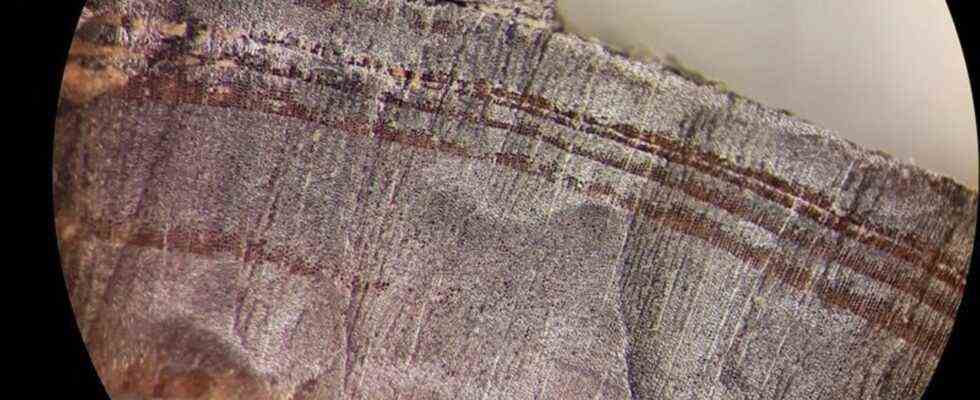science
Wood and solar storm provide evidence of Vikings in America
Microscopic image of a fragment of wood from the Nordic strata in L’Anse aux Meadows. Exactly a thousand years ago, in 1021, Vikings could have lived in North America. Photo: Petra Doeve / Springer Nature / dpa
© dpa-infocom GmbH
A team of researchers was able to determine the exact year in which Vikings were already living in America. A solar storm over a thousand years ago helped the scientists.
Exactly a thousand years ago, in 1021, Vikings could have lived in North America. At least that’s what an analysis of wooden remains, presented by a research team in the journal Nature, suggests.
The finds are therefore the oldest, precisely dated evidence that people from Europe came to America across the Atlantic. A violent solar storm helped the team to determine the age of the pieces of wood.
Long before Columbus
It has been known for some time that Columbus was not the first European to reach the American continent. Last but not least, the Sagas, Old Norse stories from the Middle Ages, describe in relative detail how the Vikings sailed across the Atlantic with their iconic longships hundreds of years earlier. But these stories, initially passed down orally, have long been dismissed as myths and fairy tales – also because they contain many contradicting and fantastic elements. It was not until the archaeological site of L’Anse aux Meadows was discovered in 1961 on the northern tip of the Canadian island of Newfoundland that the sagas became historical sources. However, the exact age of the settlement has not yet been determined, nor has the exact time of the Vikings’ arrival on the continent.
Three inconspicuous pieces of wood that have just been found in L’Anse aux Meadows now seem to allow more precise dating. The remains, which come from different trees, were examined more closely by a team led by geochronologists Michael Dee and Margot Kuitems from the University of Groningen. The scientists are certain that the wooden artifacts can be assigned to the northern European seafarers – not only because of their location, but also because they clearly showed signs of processing from blades made of metal, a material that was not made by the local population at the time.
Cosmic event helps the research team
In clarifying the question of when the wood of the artifacts was obtained, the scientists now helped radiocarbon dating, which were carried out both at the University of Groningen and at the Curt Engelhorn Center in Mannheim, as well as a cosmic event: in the year 992 AD A massive solar storm occurred, which produced a clear radio carbon signal in the tree rings in the following years.
“The clear increase in radiocarbon production between 992 and 993 AD was noted in tree ring archives around the world,” explains research director Dee in a press release. That signal was shown in each of the three wooden objects examined 29 growth rings in front of the bark edge. “The fact that we found the signal of the solar storm 29 growth rings in front of the bark allows us to conclude that the cutting activity took place in AD 1021,” summarizes lead author Kuitems.
Their analysis thus sets a new marker for the arrival of Europeans on the American continent, according to the authors. In addition, she emphasizes the potential value of cosmic radiation events – such as the strong solar storm here – as reference points for future dating of artifacts and environmental events.
How long did the Vikings stay in America?
It remains unclear how many expeditions the Vikings undertook to America and how long they stayed there. Nor is so far known about the effects of their stays. The Icelandic sagas suggested that the Vikings entered into a cultural exchange with the indigenous peoples of North America, the scientists write: “If these encounters actually took place, they could have had unintended consequences, such as the transmission of pathogens or the introduction of strangers Animal and plant species or even the exchange of human genetic information. “
However, recent data from the North Greenland population showed no evidence of the latter. The authors conclude: “How the year 1021 AD relates to the transatlantic activities of the Vikings as a whole is the subject of future research. Nonetheless, our results provide a chronological anchor for further investigation into the consequences of their westernmost expansion. “

